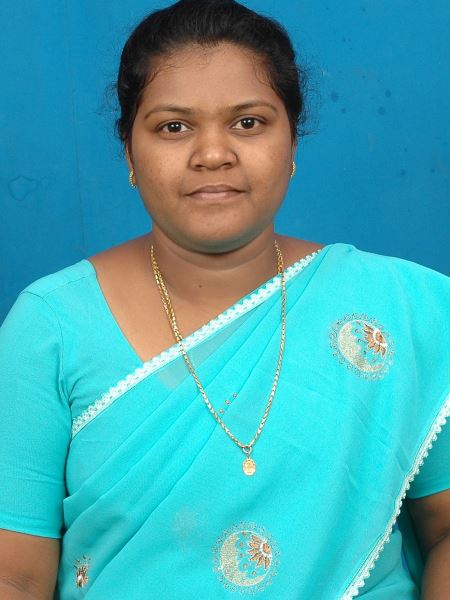"comparative molecular docking of xanthine oxidases: in silico study of inhibition of xanthine oxidase by synthetic (2nap1-2nap5) series as drug compound in parkinson’s disease".
ROS (Reactive Oxygen Species) production via oxidative stress leads to selective neuronal degeneration and finally results in neurodegenerative diseases. PD (Parkinson’s disease) is one of the second most common neurodegenerative disease caused by overproduction of ROS due to the activity of xanthine oxidase. XO activity inhibitors may prove to be promising antiparkinson agents. Present investigation describes the synthesis and characterization of fluoro substituted pyrazolyl pyrazoline derivatives using spectrometer and 1HNMR spectra. Molecular docking studies of NAP1-NAP5 derivatives were performed in silico using molecular docking software. The resulting dock score in terms of D score has been compared with the standard XO inhibitor i.e. Allopurinol and Oxypurinol. The in silico approach used to study the Drug and Enzyme interaction using docking mechanism. Results indicated that the NAP derivatives accounted for better region specificity towards XO. It shows the strong binding interaction of ligand and receptor calculated on the basis of D score; hence the D score shows highest affinity. Overall score tabulation for D score as 2NAP1: -101.78; 2NAP2: -118.32; 2NAP3: -99.921; 2NAP4: -105.22; 2NAP5: -101.56; accordingly with the comparison of standard ligand molecule i.e. Allopurinol: -37.016 and Oxypurinol: -37.233.
Bridging the digital divide: understanding consumer awareness towards cyber security in rural and urban communities
In an era of rapid technological advancement, the digital divide between rural and urban communities has become increasingly apparent. This study aims to investigate consumer awareness towards cyber security in both rural and urban settings, recognizing its critical importance in safeguarding personal and sensitive information. The study underscores the urgent need for targeted interventions to bridge the digital divide in cyber security awareness. Policymakers, educators, and community leaders must collaborate to implement initiatives tailored to the unique needs of rural populations, including improving access to technology, enhancing digital literacy programs, and fostering a culture of cyber security consciousness. By addressing these disparities, we can strive towards a more inclusive and resilient digital society where all individuals, regardless of their geographic location, are empowered to navigate the digital landscape securely. This research paper delves into the awareness and attitudes of consumers regarding cyber security in both rural and urban settings. With the increasing prevalence of online activities, particularly e-commerce, understanding the level of awareness and concerns about cyber security is crucial. The study analyzes data collected from 100 respondents, examining demographics, online shopping behavior, encounters with security issues, familiarity with safety measures, and sources of information about cyber security. The findings provide insights into the digital divide between rural and urban communities and offer recommendations for enhancing cyber security awareness and education.
Variation in fruit morphological traits of jatropha curcas at stand and tree level
Nine fruit morphological traits were studied in ten stands of Jatropha curcas spread in eight forest divisions of Uttarakhand. Variation was examined at stand level as well as at tree level. Significant differences were found among stands for fruit length, fruit diameter, pericarp weight per fruit, seed: fruit weight ratio, kernel: fruit weight ratio and pericarp: fruit weight ratio traits while all morphological traits showed significant differences among trees within stands. The estimation of the variance components, however, revealed that the fruit traits, especially weight traits viz. fruit weight, total seed weight per fruit and total kernel weight per fruit have negligible contribution from stands and small contribution from trees. Maximum variation was found among fruits within trees (i.e. at fruit level or error). Pericarp weight per fruit and fruit ratio traits (i.e. seed: fruit weight ratio, kernel: fruit weight ratio and pericarp: fruit weight ratio) were affected to small extent by stand per se. The repeatability of all fruit traits at tree level were also low to moderate (0.105 to 0.278)
Effects of industrial wastewater on vegetative growth and pigmentation of oil yielding and vegetable crops
When we tested various industrial wastewater samples collected from different industries they shown high amount of toxic chemical components, and the samples are unfit for irrigation or for any kind of activity. Irrigation of untreated wastewater for long time leads to soil pollution by accumulating toxic salts in the soil. The regular growth of plant get effected by this water like improper growth, low chlorophyll content, low carotenoids content, low yield, etc. Three different types of oil yielding plants (Mustard, Ground nut and Sunflower) and three different types of vegetable crops (Tomato, Chilly and Brinjal) has grown by using different industrial wastewater samples. The primitive parameters of vegetative growth (imbibition, seed germination and vigour index) and nutritional components (chlorophyll a, b and carotenoids) have been observed in all the samples after growing for a particular time period. The imbibition test of seed samples in industrial wastewater samples have not shown significant variation compared to imbibition in distilled water sample. All the seeds in all wastewater samples absorbed almost negligible difference but in the percentage of germination there is significant difference. The tests for nutritional compositions have also shown significant decrease in chlorophyll a, b and carotenoids in all varieties.
Inhibitory potential of phaseolus lunatus l. seeds to digestive enzymes
Introduction: Study was conducted with an objective of investigating the inhibitory effect of Phaseolus lunatus seeds extract on three enzymes (α-amylase, maltase and glucoamylase) involved in diabetes. The disadvantages related to the use of synthetic drugs make it necessary to search for alternative medicines from medicinal plants. One therapeutic approach for treating postprandial hyperglycaemia is to decrease the plasma glucose level, which can be attained by lowering the starch hydrolysis by digestive enzymes such as α-amylase, maltase and glucoamylase. The use of synthetic antidiabetic agents caused gastrointestinal side effects. Methods: Hence, the research was aimed to evaluate the potential of Phaseolus lunatus seeds extract to inhibit α-amylase, maltase and glucoamylase as a possible mechanism of hypoglycemia caused by this plant with fewer side effects. Phaseolus lunatus, also known as Lima bean, is native to Tropical America and grown worldwide. Lima bean has been prescribed traditionally to treat different diseases, including diabetes. Result: The results of the present study showed that Phaseolus lunatus seeds extract has exerted both time and concentration-dependent Significant inhibitory effects on these digestive enzymes might be due to the cumulative impact of phytoconstituents in the plant extract. Conclusion: Therefore, it can be said that the part mechanisms by which Phaseolus lunatus exhibited its antidiabetic activity might be through inhibiting this digestive enzyme.
Strength training in persons with parkinson's disease – a review
Background: Idiopathic Parkinson's disease (PD) is a central nervous system degenerative disorder with an unknown etiology. PD is the second leading cause of neurological impairments. Exercise therapy treatment is commonly used for PD to improve health and decrease the functional limitations. Exercise therapy includes Strengthening, aerobic, agility etc.. Objective: To investigate the evidence on efcacy and limits of strength training in rehabilitation of Parkinson's disease Method: A comprehensive search on pubmed, clinical keys database using keywords Parkinson's disease, physical therapy, strength training ,resistance training. The studies including Randomized controlled trails and systematic reviews published since 2005 are reviewed. Results: 36 studies identied through database searching. 25 studies are excluded due to duplicates, irrelevance, based on titles, outcome diversity. 5 systemic reviews and Meta analysis, 6 RCT are included. Review and analysis of articles is going on Conclusion : The result of this review suggests that strength training program can be effective in people with mild and moderate parkinson's disease. It can improve functional independency with increased muscle strength, gait parameters, posture and balance, all of these positive role on participation and quality of life.
Assess the prevalence of polycystic ovarian syndrome among adolescent girls.
World Health Organization (WHO) estimation disclosed over 116 million girls (3.4%) area unit stricken by PCOS worldwide. The predisposing risk factors embrace genetic science, system, lifestyle/environment, fatness that contributes to the event of PCOS. it's calculable that between 5 to ten % of U.S. girls of childbearing age have PCOS. that is regarding five million girls, which makes the condition one among the foremost common secretion endocrine disorders among girls of generative age. A study to assess the prevalence of PCOS among adolescent women at hand-picked setting, Chennai. Objective: to assess the prevalence of PCOS among adolescent women. Methodology: A non-experimental descriptive analysis style was adopted during this study. The non-probability convenient sampling technique was accustomed choose the sample size of two hundred adolescent Girls. The assessment of the prevalence of PCOS was administrated employing a self-reported check list through a Googletype. A survey link was sent to the respondents, via email and WhatsApp& teams. knowledge was analyzed by descriptive and inferential statistics. Result: our Majority (36.5%) of the samples had gentle & moderate PCOS symptoms and twenty-sevenths had severe symptoms. relating to physical activity, the bulk (38%) of the samples had gentle physical activity, thirty-fourth had moderate physical activity and twenty-eighth had severe activity. There was a direct correlation between PCOS symptoms and Physical activity. There was a statistically vital relationship between PCOS symptoms with age, religion, academic standing, dietary habits, previous information, supply of data, the cycle of emission and BMI and there was a statistically vital relationship between physical activity with age, Religion, academic standing, monthly family financial gain, age at the time of start, previous information, supply of data, variety of family, Cycleof emission & BMI. Conclusion: PCOS among adolescents is a rising problem that wants careful assessment, timely intervention, and appropriate treatment. Diagnosis of PCOS in adolescence remains a challenge attributable to overlapping symptoms of PCOS with traditional time of life changes in adolescents. life-style modifications for weight reduction and dietary modifications and psychological content plays vital role in these young ladies for preventing long run complications. Keywords: Poly cystic ovarian syndrome (PCOS), Prevalence, PCOS symptoms, Physical activity, Adolescent Girls.
Synthesis of biologically active compound 1,4-dihydropyridine by using an efficient and versatile silica supported mgo catalyst
A simple one pot synthesis has been developed for the synthesis 1,4-dihydropyridine using an efficient and reusable silica supported MgO solid catalyst by condensation of dimedone, ethyl acetoacetate, aldehyde and ammonium acetate in methanol as a solvent at room temperature. The reactions could be carried out under mild reaction conditions with very good yield of polyhydroquinoline, up to 92%. This catalyst could be recycled very easily, which makes this methodology environmentally benign.
Beliefs and practices in taking licensure examination for teachers as spectrum of teachers’ moral principles: a case probe
The study employed Appreciative Inquiry framework to have an in-depth investigation in the personal lives of the participants and to draw connections between their beliefs and practices in taking Licensure Examination for Teachers and how these superstitions reflect and affect their moral principles. Specifically, it aimed to: (1) determine the superstitious beliefs followed by the examinees before, during, and after taking the Licensure Examination for Teachers (LET); (2) determine the positive and negative impact of these superstitions in the aspect of taking LET; and, (3) identify the effects of these superstitions in the characters and principles of the teachers. Semi-structured interview and focus group discussion were used and the data-sources were triangulated to come-up with a stronger analysis. Audit trail and member checking were followed to ensure that there were no biases in the interpretation of the data and to establish the validity of the results. Findings revealed that the student examinees followed different superstitious beliefs before, during and after the exam which have positive and negative effects. The motive of avoiding failure in the examination predominates over the motive of achieving success. The positive and negative effects of superstitions vary from one person's experience to another. Moreover, the assertion and personal disposition to pass the exam became the product of student examinees' projection. The superstitious notions were initiated to discard the student examinees' fears and to safeguard their emotional sphere against negative feelings and any untoward possibilities. Meanwhile, in the development of moral principle, the student examinees' family, peers and the society are important factors in the establishment of their belief system which later on reflects the moral principles they uphold.
A comprehensive review for security analysis of iot platforms
Due to the rapid growth in the field of science and technology, IoT (Internet of Things) has become emerging technique for connecting heterogeneous technologies related to our daily needs that can affect our lives tremendously. It allows the devices to be connected to each other and controlled or monitored through handheld devices. The IoT network is a heterogeneous network that links several small hardware restriction devices, and where conventional security architectures and techniques cannot be used. So, providing protection to the IoT network involves a diverse range of specialized techniques and architectures. This paper focuses on the requirements of defense, current state of the art and future directions in the field of IoT.
The rise of patanjali
This case is designed to highlight the marketing strategies adopted by a new entrant in the fast-moving consumer goods (FMCG) sector. The importance of brand architecture in building brand relevance in this competitive environment and enhancing customer loyalty has been put forth as illustrated by the experts. The synchronization of branding strategies and marketing communications in terms of establishing a customer connect purely on the basis of nationalism, price, and natural preparations have been highlighted from the perspective of Patanjali’s growth strategy. The brand has been envied by all the big players of the sector for proving itself as the major disruptor being portrayed in terms of its voluminous sales and ever-rising revenues. This case on Patanjali offers an insight into the strategies followed by a new company to position the brand at the right time and acquire a substantial market share. It also highlights the facts that exceptional competitiveness in distribution strategies may not be the only determinant for effective management of distribution strategies, and the road ahead needs to be rightly sorted out. This case also tries to unlock the path that determines the success the brand Patanjali has achieved which otherwise took decades for Nestle, Proctor & Gamble, ITC, or Unilever to achieve.
Épuisement des réserves et conflits fonciers inter-collectivités dans l’ouest de la région des savanes au nord-togo
L’émergence des territoires et l’épuisement des saltus stimulent des questions foncières longtemps restées en veilleuse. Au T ogo en général et spécifiquement dans l’Ouest de la Région des Savanes, la terre est une propriété privée des lignages. Le droit foncier y repose sur la prééminence du droit du premier occupant et matérialisé par une divinité appelée Tingban. L’insuffisance des preuves de prééminence et l’authenticité des fétiches, source de droit, opposent souvent les collectivités. La présente étude décrit l’épuisement des ressources foncières et analyse les conflits fonciers qui opposent les collectivités dans l’Ouest de la Région des Savanes. La méthodologie adoptée repose sur l’observation participante, la recherche documentaire et les entretiens. Les résultats révèlent de nombreuses disputes socio-foncières qui opposent les lignages, les villages et les cantons. Les collectivités contestent entre elles, les droits de paternité sur les terres dans 74% des cas alors que 26% des querelles foncières sont dus aux remises en cause des limites des propriétés collectives. Ces contestations plongent leurs racines dans la complexité du droit foncier coutumier fondé sur la prééminence du droit du premier occupant. Elles sont aussi liées à la non maîtrise des limites des domaines fonciers lignagers et des territoires cantonaux respectivement par les descendants, les chefs de villages et les chefs de cantons.
Antibiotic prescribing in pediatric health care services
Although, antibiotics play a fundamental role in control of infectious diseases still the injudicious prescription of antibacterial agents and antibiotic resistance are a global problem. This study aims to assess prescribing pattern of antibiotics and to provide a baseline data about behaviors of physicians prescribing antibiotics during pediatric consultations. In this study, a total of 316 pediatric patients of both genders were receiving different antimicrobial therapy were evaluated during 2021 in pediatric health care services in Bayda, Libya. Data revealed that the average of drugs prescribed was 4.10 per patient while the average of antimicrobials was 2.30 per prescription. Most of the antibiotics were prescribed for the respiratory tract infections (34.0%) and followed by the urinary tract infections (29.0%). Cephalosporins and penicillins were the most common antibiotics prescribed in this study. In conclusion, these findings show the presence of polypharmacy and inappropriate prescribing pattern. To improve and minimize the unnecessary prescribing of antimicrobial agents, a continuous training program for physicians, as well as engaged pharmacists in health care services are needed.
 Mediterranean journal of pharmacy and pharmaceutical sciences
Mediterranean journal of pharmacy and pharmaceutical sciences
The future of customer experience is now: how ai is leading the charge in customer-centric innovation
In today’s ever-changing world with new advancements, Customer Experience or CX plays a critical role in a value proposition, thereby affecting customer loyalty, top-line metrics and business growth. Artificial Intelligence (AI) is becoming very important because AI provides adequate, rapid, and smooth Mass-Customized interactions. Self-checkout to virtual assistants, current innovation reveals how tools supported by Artificial Intelligence increase customer-centric experience, helping to decipher and estimate the customer’s wants and needs in real-time. Thus, this paper focuses on the revolutionary impact of AI in recasting customer experience management initiatives, which includes understanding AI applications in customer marketing, customer service, customer emotion analysis, and prediction of the probable behavior of customers. By means of AI, organizations can design and deliver unique experiences for their customers, fine-tune contacts, and improve satisfaction, loyalty, and customer retention. This article thus presents a critical discussion of prior and current literature on AI and customer experience and the research methodology adopted for assessing AI quality in improving CX innovations. It expounds on results from recent case studies on the value of integrating AI. It is not a matter of whether customer experience will be powered by AI, but when and by how much, as customer data drives decisions, interactions with customers, and learning in near-real time. Therefore, as AI technologies advance, companies adopting AI in customer experience approaches will close distance or gain ground on their competitors since they will efficiently offer superior, preemptive and personalized experiences.
A bibliometric analysis on "an empirical analysis of household consumption in maharashtra (pre and post covid-19)
This study presents a comprehensive bibliometric analysis of household consumption research in Maharashtra from 2017 to 2023, highlighting shifts in academic focus before and after the COVID-19 pandemic. The analysis explores key research trends, including foundational theories like the Keynesian consumption function and Engel’s law, while examining how themes such as income-consumption relationships, inequality, and economic resilience have evolved. Through citation network analysis, publication trends, and thematic evolution, we identify the most influential works, authors, and institutions that have shaped this field. Pre-pandemic research centered on established economic concepts, exploring factors like income distribution, economic growth, and household debt as predictors of consumption. However, post-2020, there is a marked shift towards understanding financial resilience, the impact of income shocks, and the role of government interventions in stabilizing consumption patterns during crises. This transition reflects an adaptation of traditional consumption models to account for pandemic-induced economic disruptions, emphasizing financial literacy and digital transformation as critical areas of study. Our findings contribute to a deeper understanding of the drivers of household consumption research in Maharashtra, providing insights into the socio-economic factors that influence spending behaviors in both stable and volatile conditions
Bioefficacy and persistency of insecticides against blister beetle, mylabris pustulata (thunb.) in pigeonpea, cajanus -cajan (l.) millsp
Blister beetle, Mylabris pustulata (Thunb.) is a polyphagous pest attacking flowers of pigeonpea (Cajanus cajan), cotton (Gossypium sp), lady’s finger (Abelmoschus esculentus), mungbean (Vigna radiata), urdbean (Vigna mungo), ricebean (Vigna umbellata) etc. throughout the country. Because of its polyphagous feeding nature and hard protective adaptation against insecticides, long term management of this pest with a single molecule is difficult. Therefore, field cum laboratory experiments were carried out for three consecutive cropping seasons during kharif 2008-09, 2009-10 and 2010-11 to find out the persistence and efficacy of different insecticides. It was found that decamethrin 2.8EC was 3334 times toxic with lowest LC50 value (0.0000563) followed by monocrotophos 36SL as compared with endosulfan which was the least toxic with LC50 value (0.1877). Insecticides evaluated for their persistent toxicity during 2009-10 revealed that decamethrin and thiodicarb caused cent per cent mortality of adult blister beetle immediately after spray. At 8th days after spraying, decamethrin caused 60 per cent mortality. Insecticides evaluated for their efficacy during the year 2010-11 revealed that the plants were found free from adult blister beetle population in treatments involving decamethrin and cypermethrin even at ten days after spray. Among all the treatments, spraying of thiodicarb 75WP @ 625 g ha-1 provided the highest grain yield (18.87 q ha-1). Maximum cost-benefit ratio was observed in monocrotophos 36SL, cypermethrin 25EC and decamethrin 2.8EC
Therapeutic potentials of crocin in medication of neurological disorders
Neurological sicknesses are severe, multifactorial, debilitating disorders that may cause neurodegeneration. Neuroprotection protects the structure and capacity of neurons from affronts emerging from cell injuries instigated by an assortment of specialists or neurodegenerative diseases. Various neurodegenerative diseases, including Alzheimer's, Parkinson's, and epilepsy, afflict many people worldwide, with increasing age representing the leading risk factor. Crocin is a natural carotenoid compound with therapeutic potential in managing neurological disease. In this review, we focused on the therapeutic capabilities of Crocin as a neuroprotective agent. The general neuroprotective impact and the various conceivable essential components identified with Crocin have been examined. In light of the substantial proof indicating the neuro-pharmacological viability of Crocin to different exploratory standards, it is concluded that Crocin exerts direct antioxidant, antiapoptotic and anti-inflammatory activities by multiple signalling pathways. Besides, Crocin was found to elevate dopamine levels in the brain during the experimental model of Parkinson's disease. Thus, this compound has been demonstrated to be a promising option for treating neurodegenerative diseases with few adverse effects. It should be further considered as a potential contender for neuro-therapeutics, concentrating on the mechanistic and clinical evidence for its effects.
Ru-dye grafted cus and reduced graphene oxide (cus/rgo)composite:an efficient and photo tunable electrode for dye sensitized solar cells
The CuS@reduced graphene oxide (CuS/RGO) hybrid nanocomposite was synthesized by facile hydrothermal method and used as a photoelectrode material in photovoltaic applications. In the hydrothermal route, RGO is formed by the reduction of GO with simultaneous formation of CuS/RGO nanocomposites. The CuS/RGO nanocomposites was investigated using powder XRD, TEM, HR-TEM, Raman, XPS, DRS UV–Vis spectroscopy, Photoluminescence (PL) measurements. XRD and TEM results suggest that CuS crystalline with individual spherical like homogeneous nanoparticles sizes in the range of 45–35 nm, which is distributed throughout the RGO sheets. We further construct the flexible photoelectrodes by using CuS and RGO and studied the photovoltaic performance. Photovoltaic parameters, such as short-circuit photocurrent density, open circuit voltage, fill factor and conversion efficiency were found to be 16 mA/cm2 , 0.71 V, 70.1% and 7.81% respectively, for CuS/RGO photoelectrode. The improved photo conversion efficiency of CuS/RGO is due to enhancing the electronic injection ability and reducing the photogenerated charge recombination. These photovoltaic results indicate a simple methodology for the low cost and effortless synthesis of an alternative CuS/RGO photoelectrode in high performance photovoltaic devices.
Green marketing elements: a study on customer purchase intention towards organic food products with special preference to coimbatore city.
This study aims to investigate the relationship between green marketing elements and customer purchase intention. To conceptualize green marketing, the researcher has researched the literature and identified the green marketing elements which include Green products, Green price, Green place, Green promotion, and Green Distribution. By using the snowball sampling technique, questionnaires from the respondents were collected as part of the study's survey methodology. According to the study's findings, there is a clear, substantial correlation between customer purchase intention and Green marketing.
Most Popular Category
- Pharmacy (258)
- Education and social science (216)
- Pharmacology (211)
- Pharmacognosy (173)
- Business management (147)
- Pharmacology and toxicology (132)
- Education and training (126)
- Pharmaceutical sciences (126)
- Research (121)
- Medicine (111)
- Management (98)
- Health Science (96)
- Computer Science (87)
- Human resource management (83)
- Biological Sciences (83)
- Computer Science Applications (80)
- Engineering (77)
- Accounting and finance (73)
- Information technology (67)
- Public health (60)
 Dr. wahul umesh b
Dr. wahul umesh b
 Dr. salman ahmed
Dr. salman ahmed
 Elsi queen
Elsi queen
 Darrel ocampo
Darrel ocampo
 Dr. babu lal jat
Dr. babu lal jat